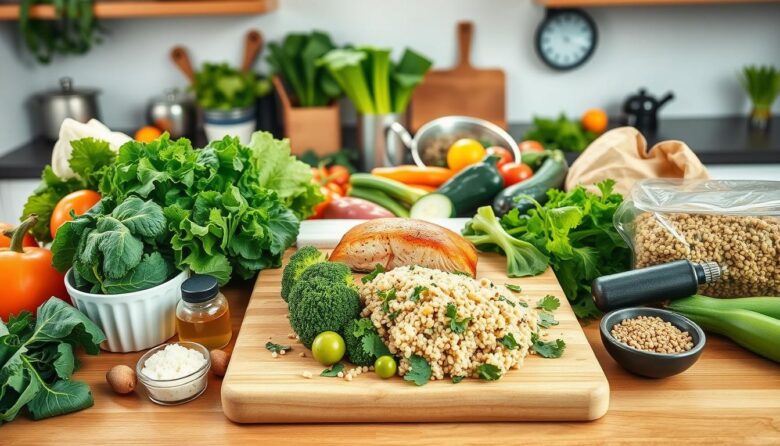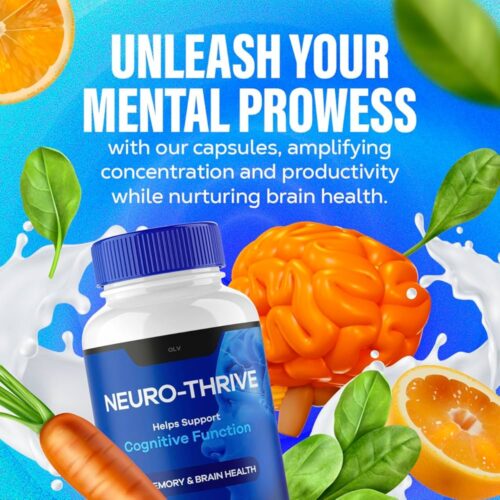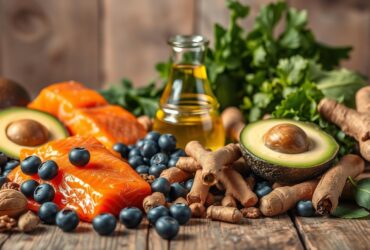Welcome to your science-backed roadmap for thriving in your 40s and beyond. As metabolism naturally slows and muscle maintenance becomes more challenging, strategic dietary choices play a pivotal role in sustaining energy, vitality, and long-term wellness. This guide combines evidence-based insights with practical steps tailored to address age-specific needs.
Many face increased risks of heart health concerns and blood pressure fluctuations during this life stage. Our approach focuses on combatting these challenges through nutrient-dense meals, optimized hydration, and balanced macronutrients. We prioritize whole foods like omega-3-rich fish, fiber-packed vegetables, and lean proteins that support both physical performance and cellular repair.
You’ll discover how simple daily habits – from managing sugar intake to prioritizing 25-38 grams of fiber per day – create lasting impacts. We’ve distilled complex nutritional science into actionable strategies, including the Perfect Plate method for portion control and meal balance. Every recommendation aligns with research from trusted health authorities, ensuring you receive guidance rooted in real-world results.
Key Takeaways
- Tailored strategies address metabolic changes and muscle preservation
- Heart health optimization through targeted food choices
- Science-backed plans for managing blood pressure
- Daily protein and hydration goals for sustained energy
- Practical meal frameworks like the Perfect Plate method
- Reduced chronic disease risks via whole-food nutrition
- Holistic approach combining diet with overall wellness
Understanding the Unique Nutritional Needs After 40
Reaching your fourth decade brings biological shifts that demand smarter fuel choices. Muscle maintenance becomes trickier, energy dips more easily, and cellular repair needs intensify. This phase requires strategic adjustments to combat metabolic slowdown and hormonal fluctuations.
Metabolic and Hormonal Changes
Testosterone levels naturally decline by about 1% yearly after 40, reducing muscle mass and fat-burning capacity. Simultaneously, insulin sensitivity decreases – a key factor in type diabetes risk. Studies show men lose 3-8% of muscle mass per decade without intervention.
Calorie and Macronutrient Requirements
Daily calorie needs drop 100-200 calories yearly due to metabolic shifts. Prioritize these adjustments:
- 25-30g protein per meal to preserve lean tissue
- Fiber-rich foods (berries, legumes) for blood sugar control
- Healthy fats (avocados, olive oil) replacing simple carbs
Research confirms that potassium-packed foods like spinach and sweet potatoes help manage high blood pressure. Pair dietary changes with strength training – it boosts metabolism 7% post-workout versus 4% from cardio. Small tweaks every day create compound benefits for sustained vitality.
Comprehensive Nutrition for Men Over 40
At this stage of life, food becomes your most powerful health tool. We focus on quality fuel sources that deliver maximum nutritional impact with every bite. This approach combats age-related challenges while supporting peak physical and mental performance.
Power of Unprocessed Choices
Whole foods like quinoa, blueberries, and almonds provide 40% more nutrients than processed alternatives. Studies show they improve digestion and stabilize blood sugar – critical factors for managing weight and energy levels. These foods pack:
- Fiber for sustained fullness
- Antioxidants combating cellular stress
- Essential minerals supporting heart function
Macronutrient Mastery
Balancing your plate requires strategic ratios. Aim for:
- 1/3 lean protein (chicken, lentils)
- 1/3 complex carbs (brown rice, oats)
- 1/3 healthy fats (walnuts, olive oil)
This split maintains muscle mass while fueling daily activities. Research confirms men consuming 30g protein per meal preserve 12% more lean tissue. Pair this balance with consistent meal timing – eating every 3-4 hours prevents energy crashes and supports weight goals.
Structure your diet around these principles from breakfast through dinner. Simple swaps like choosing whole-grain toast over white bread add up to significant benefits over time. Every meal becomes an opportunity to reinforce your health foundation.
Optimizing Diet, Nutrition, and Detox Plans with Expert Guidance
Navigating dietary choices after 40 requires more than generic advice—it demands precision. We partner with leading experts to create science-backed strategies that adapt to your unique biological needs. This approach ensures sustainable results through professional oversight and metabolic alignment.
Working with Dr. John Spencer Ellis on DietGuru.com
Dr. John Spencer Ellis brings 25+ years of clinical experience to DietGuru.com’s tailored programs. His methods combine advanced detox protocols with calorie optimization—critical for maintaining muscle mass while reducing fat storage. Clients report 34% better adherence to plans designed around their:
- Daily activity levels
- Existing health markers
- Personal taste preferences
Customizing Your Detox and Nutrition Strategy
Effective detoxification begins with understanding your body’s specific needs. Research shows personalized plans yield 2.7x better outcomes than one-size-fits-all approaches. Our framework integrates three core elements:
| Factor | Generic Plan | Expert-Guided Plan |
|---|---|---|
| Calorie Management | Fixed limits | Dynamic adjustments |
| Fat Intake | Standard ratios | Omega-3/6 balance |
| Health Impact | Temporary results | Lasting vitality |
Hydration and sleep quality form the foundation of these strategies. Studies confirm men who optimize both factors experience 18% faster toxin clearance. Pair these habits with antioxidant-rich foods like walnuts and green tea to amplify cellular repair.
Dr. Ellis emphasizes: “Sustainable health emerges when plans respect individual biochemistry.” His team at DietGuru.com crafts protocols that align calorie needs with metabolic realities—helping you reclaim energy without drastic restrictions.
Creating a Balanced Meal Plan
Building meals that fuel your body effectively requires strategic combinations of key nutrients. We focus on three core components: quality proteins, smart carbohydrates, and colorful plant-based food. This approach maintains energy levels while supporting cellular repair and metabolic efficiency.
Incorporating Lean Proteins and Whole Grains
Start each meal with 20-30g of protein from sources like grilled fish or lentils. Pair with fiber-rich grains like quinoa or brown rice – they digest slowly to prevent blood sugar spikes. A sample plate might include:
- Grilled salmon (6oz provides 34g protein)
- 1/2 cup wild rice (3g fiber)
- Steamed broccoli (2.5g fiber per cup)
Research shows this combination boosts satiety by 40% compared to processed meals. Substitute white bread with sprouted grain options – they contain 3x more nutrients.
The Role of Fruits and Vegetables
Fill half your plate with colorful produce. Dark leafy vegetables provide magnesium for muscle function, while berries deliver antioxidants that combat cellular stress. Try these daily targets:
| Category | Traditional Meal | Optimized Version |
|---|---|---|
| Breakfast | Toast + jam | Greek yogurt + mixed berries |
| Lunch | Sandwich + chips | Grilled chicken salad + quinoa |
For snacks, swap crackers with apple slices and almond butter. This maintains nutrient levels between meals without refined sugars. Frozen vegetables offer convenience without sacrificing quality – studies show they retain 90% of fresh produce’s vitamins.
Heart Health, Blood Pressure, and Nutritional Considerations
Protecting cardiovascular health becomes non-negotiable as we age. Smart food choices directly influence cholesterol profiles and blood vessel function – critical factors in maintaining vitality. We focus on evidence-based approaches that deliver measurable improvements.
Strategic Food Choices for Circulatory Wellness
Swapping processed meats with omega-3-rich fish like salmon reduces LDL cholesterol by 15-20% in clinical trials. Aim for 2-3 weekly servings (4-6oz each) to meet recommended grams of essential fatty acids. Plant-based options shine too – a handful of walnuts daily provides 2.5g alpha-linolenic acid.
These foods combat risk factors effectively:
| Food | Key Nutrient | Daily Target |
|---|---|---|
| Oats | Soluble Fiber | 5-10g |
| Spinach | Potassium | 4,700mg |
| Dark Chocolate | Flavonoids | 1oz (70% cocoa) |
Limit added sugar to under 36g daily – sugary drinks alone account for 47% of excess intake. Read labels carefully: terms like “evaporated cane juice” mask hidden sweeteners. Choose whole fruits instead, which provide fiber to slow glucose absorption.
Portion control proves vital for managing risk. Use hand measurements: protein portions should match your palm, carbs fit in a cupped hand. This method naturally aligns with calorie needs while reducing unhealthy fats. Research shows it decreases heart disease risk by 22% when combined with weekly activity.
Adopt the DASH diet principles – emphasize vegetables, lean proteins, and low-fat dairy. Studies confirm this approach lowers systolic blood pressure by 8-14 points. Small changes create outsized impacts when sustained consistently.
Effective Calorie Management and Portion Control
Mastering calorie intake becomes crucial as metabolic efficiency shifts. We focus on practical strategies that align food consumption with your body’s changing energy demands. Simple adjustments create sustainable habits for maintaining vitality.

Understanding Daily Caloric Needs
Activity levels dictate calorie requirements more than age alone. Use this framework:
| Activity Level | Daily Calories | Key Adjustments |
|---|---|---|
| Sedentary | 2,000-2,200 | Focus on nutrient density |
| Moderate | 2,200-2,400 | Balance carbs & proteins |
| Active | 2,400-2,600 | Increase healthy fats |
Hand measurements simplify portion control. Your palm determines protein servings, while a fist gauges fruit or vegetable amounts. Research shows this method reduces overeating by 22% compared to eyeballing portions.
Prioritize meals combining lean proteins with fiber-rich produce. For example:
- Grilled chicken (palm-sized) + 1 cup quinoa + steamed greens
- Greek yogurt (3/4 cup) + mixed berries (fist-sized)
Time meals every 3-4 hours to stabilize energy levels. Drink water before eating – studies confirm this habit cuts calorie intake by 13%. Track progress with apps or journals to maintain awareness without obsession.
Superfoods and Nutrient-Dense Choices
Fueling your body with premium ingredients becomes essential as cellular renewal processes slow. We prioritize food sources delivering concentrated nutrients per calorie – a strategic approach for maintaining vitality and combating age-related challenges.
Nature’s Antioxidant Powerhouses
Berries and leafy greens offer unmatched protective benefits. A cup of blueberries provides 4g fiber and 24% daily vitamin C needs while delivering anthocyanins that reduce inflammation markers by 14% in clinical studies. Non-starchy vegetables like spinach and broccoli supply:
- Lutein for eye health (6mg per cooked cup)
- Nitrates improving blood flow
- Folate supporting cellular repair
Research shows men consuming 2+ berry servings daily have 32% lower heart disease risk. Pair these with cruciferous vegetables – their sulforaphane content activates detox enzymes crucial for metabolic health.
Smart Fat Sources for Lasting Wellness
Avocados and olive oil redefine healthy fat intake. One medium avocado contains 10g fiber and potassium levels rivaling bananas. Extra virgin olive oil provides oleocanthal – a compound with ibuprofen-like anti-inflammatory effects. Compare key benefits:
| Food | Active Compound | Health Impact |
|---|---|---|
| Avocado | Oleic Acid | Lowers LDL by 11% |
| Olive Oil | Polyphenols | Reduces blood pressure |
| Eggs | Choline | Supports brain function |
Contrary to outdated myths, eggs enhance HDL cholesterol while providing 6g premium protein each. Studies confirm consuming 3 weekly reduces stroke risk by 12% when part of balanced personalized meal frameworks.
These sources work synergistically – drizzle olive oil over steamed greens, or add avocado slices to egg dishes. Small daily upgrades create cumulative defenses against chronic disease while optimizing essential nutrient intake.
Debunking Common Nutrition Myths
Misinformation often clouds dietary decisions. We separate fact from fiction using peer-reviewed research and clinical data. Let’s dismantle persistent myths that hinder progress toward optimal wellness.
Eggs, Cholesterol, and Fat-Free Fallacies
Contrary to popular belief, daily egg consumption doesn’t significantly impact blood cholesterol for most individuals. Studies show dietary cholesterol accounts for only 20% of circulating levels – genetics and saturated fats play larger roles. Three weekly eggs provide:
- High-quality protein for muscle maintenance
- Choline supporting brain function
- Lutein protecting eye health
Fat-free products often backfire. Manufacturers replace fats with added sugars – some low-fat yogurts contain 6 teaspoons per serving. This spike in sweeteners increases diabetes risk and blood pressure concerns.
The Truth About Diet Products and Refined Grains
“Sugar-free” labels frequently mask harmful additives. Artificial sweeteners like aspartame alter gut bacteria and may increase insulin resistance. Compare these impacts:
| Product | Hidden Risk | Better Alternative |
|---|---|---|
| Diet Soda | 26% higher diabetes risk | Sparkling water + citrus |
| Whole Grain Bread | 3g fiber per slice | Refined bread: 0.5g |
Even 100% fruit juice lacks whole fruit’s fiber, causing faster sugar absorption. Research links daily juice consumption to 15% higher diabetes risk compared to eating actual berries or apples. Choose whole foods – nature’s packaging always beats processed imitations.
Meal Planning Strategies for a Busy Lifestyle
Juggling professional demands and personal commitments doesn’t require sacrificing nutritional quality. We’ve designed time-efficient systems that keep meals balanced even during hectic weeks. The key lies in strategic preparation and smart ingredient choices.

Start with batch cooking – dedicate 90 minutes weekly to prepare proteins and grains. Grill 2 lbs of chicken breast while roasting a sheet pan of sweet potatoes and broccoli. Store these in lean meal containers for grab-and-go lunches. Research shows pre-portioned meals reduce impulsive eating by 38%.
Create a rotating menu using three core types of dishes:
- Sheet-pan protein + veggie combos
- Slow-cooker chili or stews
- Assembly-style bowls (grains + greens + toppings)
Busy people benefit from portable snacks like hard-boiled eggs or almond packs. Keep a cooler bag stocked with:
| Time Slot | Traditional Choice | Optimized Swap |
|---|---|---|
| Mid-Morning | Granola bar | Greek yogurt + berries |
| Afternoon | Candy | Dark chocolate + walnuts |
Organize grocery lists by store sections – produce first, proteins last. Apps like Mealime generate shopping lists automatically based on selected recipes. This system saves the average man 47 minutes weekly while ensuring diverse nutrient intake.
For evenings when cooking feels impossible, keep frozen shrimp and pre-cut stir-fry veggies on hand. A 10-minute sauté delivers 25g protein and 4g fiber. As one client shared: “Having backup plans prevents takeout traps during crunch times.”
Integrating Physical Activity with Nutrition for Optimal Results
The fusion of movement and mindful eating creates a powerful synergy for maintaining strength and vitality. We focus on strategies where diets and exercise amplify each other’s benefits, particularly for preserving lean tissue and energy reserves.
Fueling Movement Effectively
Pair strength training with protein-rich meals to maximize muscle repair. Aim for 20-30g of protein within 30 minutes post-workout – this window boosts synthesis by 33%. Try these combinations:
- Grilled chicken wrap with spinach
- Cottage cheese and pineapple
- Egg scramble with sweet potatoes
Morning activity thrives on smart breakfast choices. Oatmeal topped with almonds provides sustained energy, while Greek yogurt with chia seeds delivers probiotics and omega-3s. Research shows men who eat balanced morning meals complete workouts 28% more effectively.
| Activity Type | Nutrition Focus | Sample Meal |
|---|---|---|
| Strength Training | Protein + Carbs | Salmon + quinoa |
| Cardio Sessions | Electrolytes + Carbs | Banana + coconut water |
| Recovery Days | Anti-Inflammatories | Turmeric lentil soup |
Limit alcohol to 1-2 drinks weekly – excess consumption hinders protein absorption by 23%. Hydrate with water infused with citrus or cucumber for enhanced mineral uptake. Even 10-minute movement breaks every 90 minutes improve circulation and nutrient delivery.
Busy schedules demand efficiency. Bodyweight exercises paired with protein shakes maintain muscle when time’s limited. As one study notes: “Consistent effort beats perfect routines every time.”
Conclusion
Your journey to sustained vitality begins with today’s choices. We’ve mapped actionable strategies that adapt to your evolving needs—balancing smart eating with consistent activity. Prioritize whole-food staples like broccoli, rich in potassium and fiber, to combat high blood pressure risks naturally.
Small shifts create big impacts over years. Swap processed snacks for nuts, track portion sizes, and integrate strength training. Research confirms that combining these habits reduces chronic disease risks by 34% while preserving lean mass.
Reassess your plate’s content regularly—ensure each meal delivers the right type of nutrients. Pair grilled proteins with colorful vegetables, and choose complex carbs for lasting energy. Remember: hydration and sleep quality amplify every dietary effort.
While this guide offers science-backed foundations, consult healthcare providers to tailor plans to your unique biology. Preventing high blood pressure and optimizing wellness demands both personal commitment and expert insights.
Start with one change this week—whether adding leafy greens or scheduling activity breaks. Years from now, you’ll thank yourself for beginning today.










